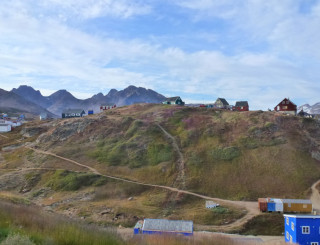
The Arctic is urbanizing. Not just in terms of demography and economy, but also in terms of cultural evolution, changing values and lifestyle choices. The tension between colonial modernization as expressed in architecture and urban planning and indigenous ways of life is evident in many Arctic cities. However, beyond theory and political debate, the practices of everyday life reveal a variety of hybrids between these apparent polarities. Contemporary urban living in Arctic areas comprises in many places an intimate relationship with the surrounding landscape – be it in the form of resource extractions, hunting, fishing, gathering and modern outdoor life, or in the narratives of the landscape. This paper explores the relationship between an urban environment and the landscape, though, not as one relationship, but as many different ones. Our sites are Tasiilaq, on the east coast of Greenland, and Longyearbyen, on the island of Spitsbergen. The paper will explore how theories and knowledge developed in the field of landscape urbanism can help avoid preset notions regarding the dualism of city versus nature while mapping actual outdoor practices in the city and its surrounding landscape, seeking to provide relevant insights into futures of cities and landscapes. Through a broad variety of architectural mapping (social, material and economic), we discover and identify hybrids between urban life and “nature life” pertinent to rethinking the development and future planning of Arctic cities. The paper concludes on the applicability of a landscape urbanism approach in developing Arctic communities.
Inuit Studies Pre-Conference Symposium, October 7, 2016 – Lisbet Harboe and Peter Hemmersam from Habiter le Nord Québécois on Vimeo.
Session 4, Preparing and Planning for Landscape Change in the Arctic
// Urban landscape hybrids in Arctic cities by Lisbet Harboe and Peter Hemmersam

